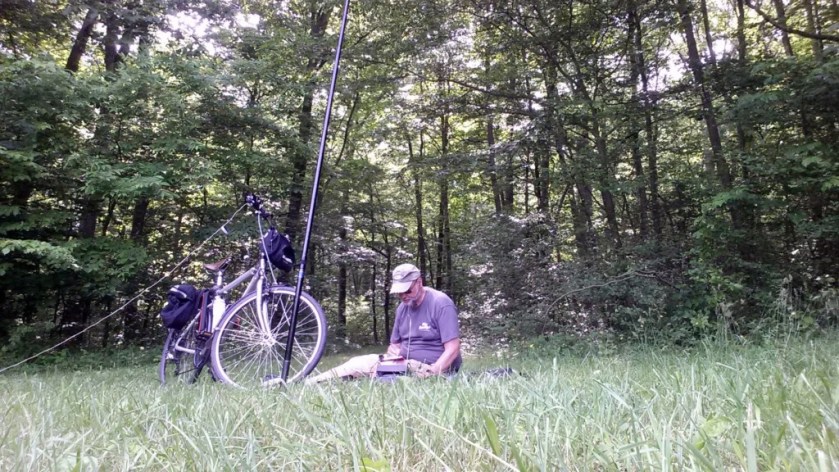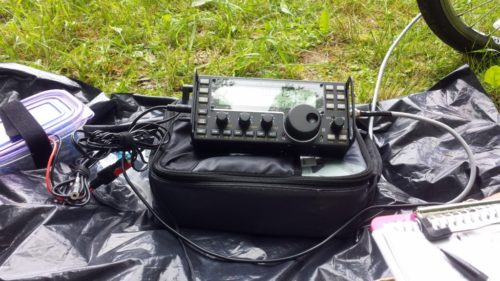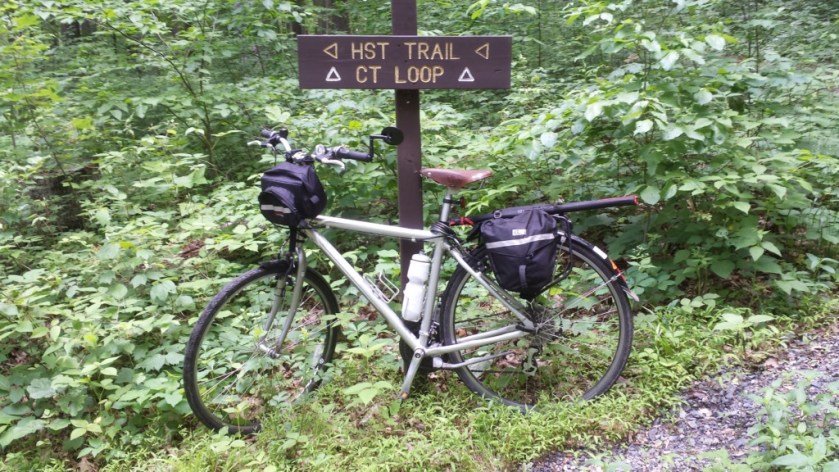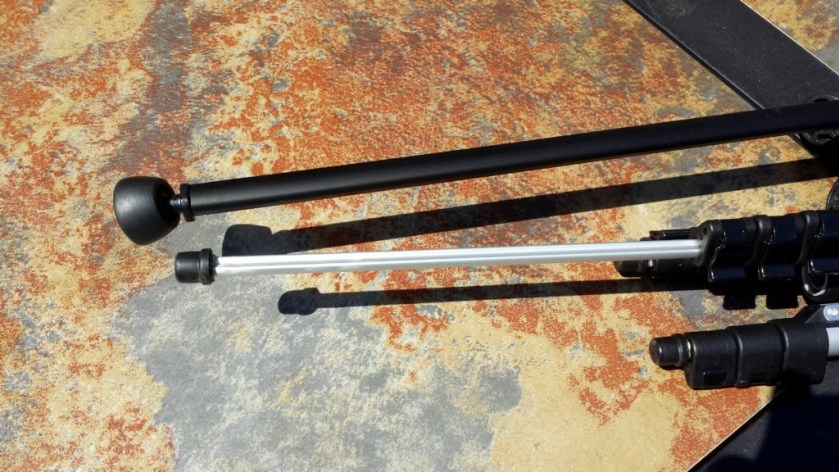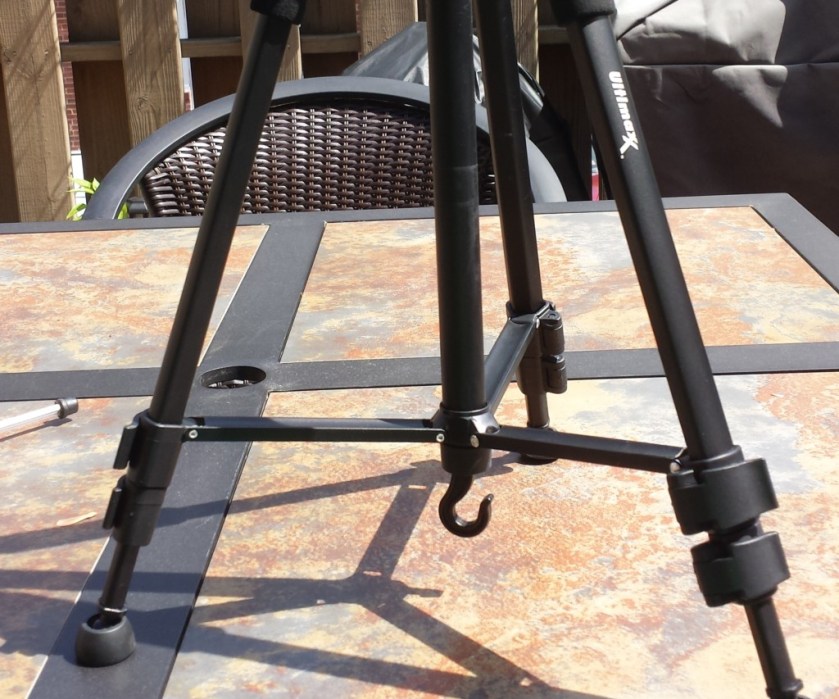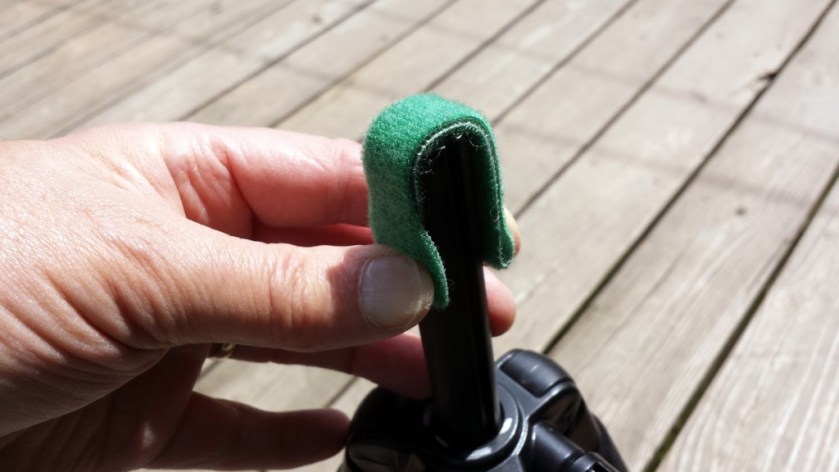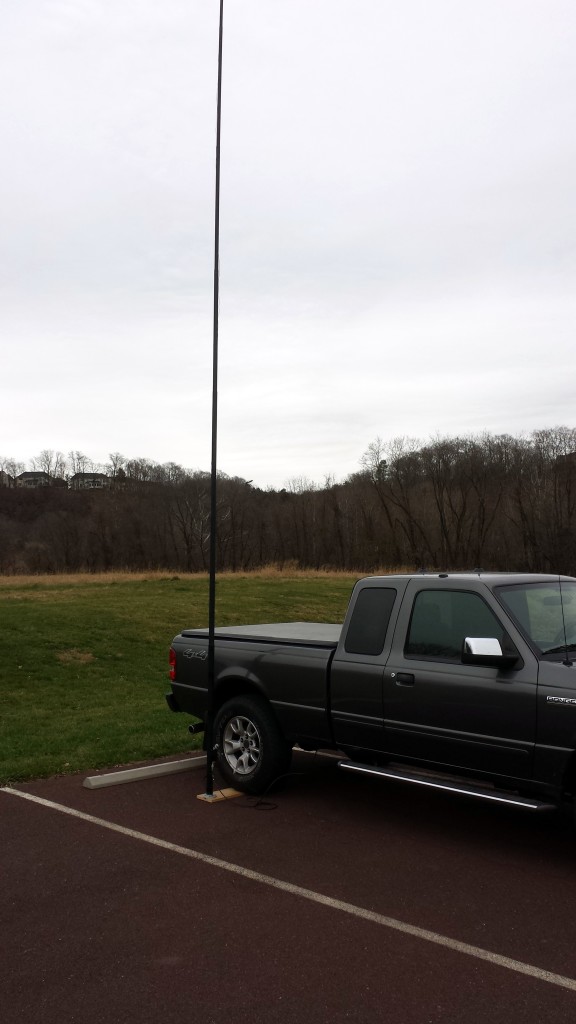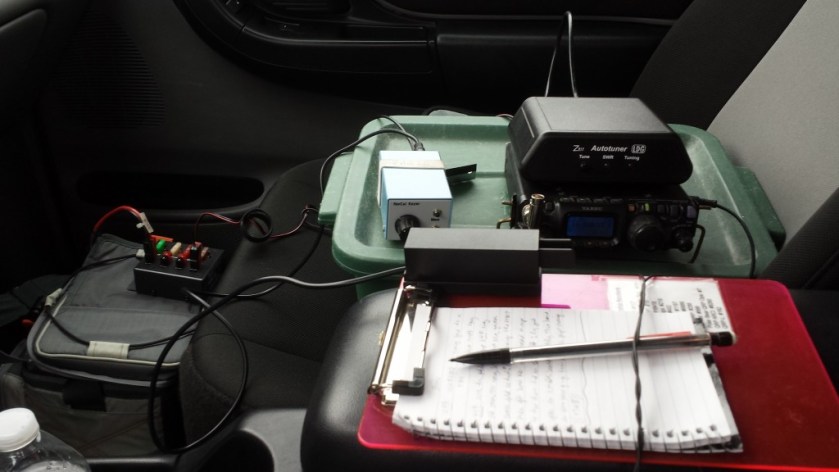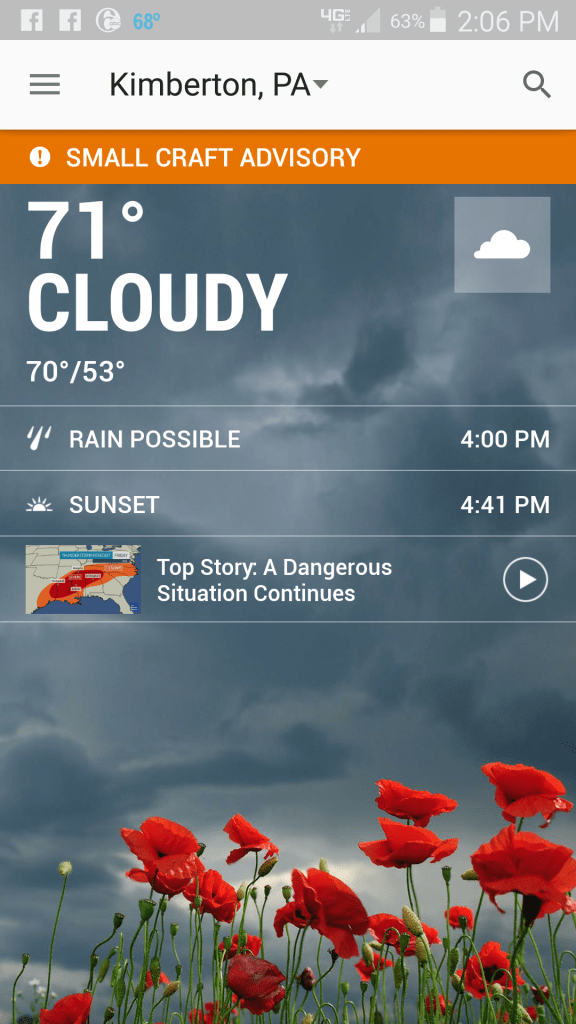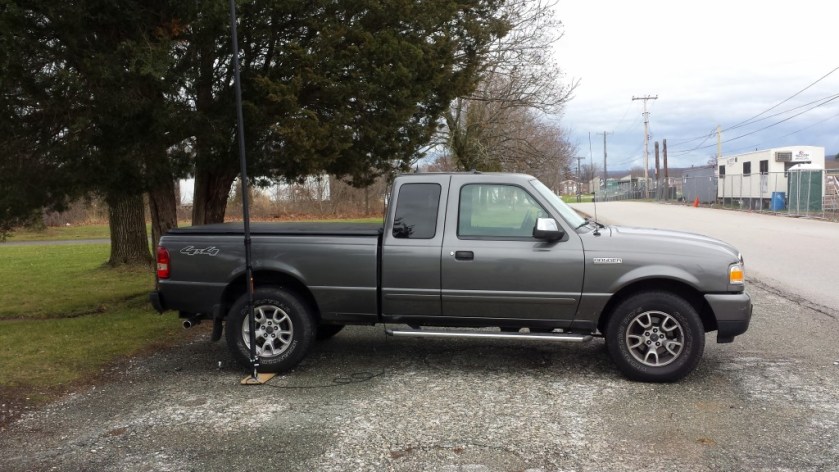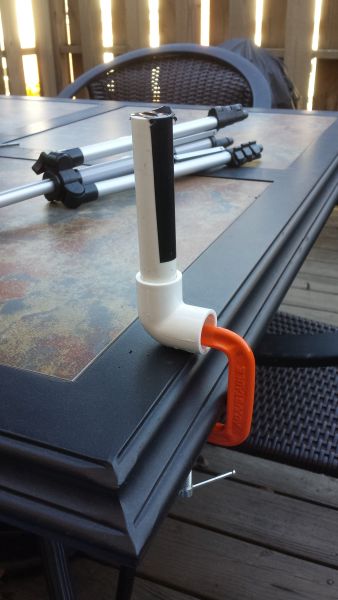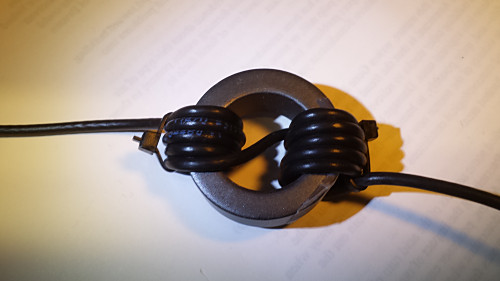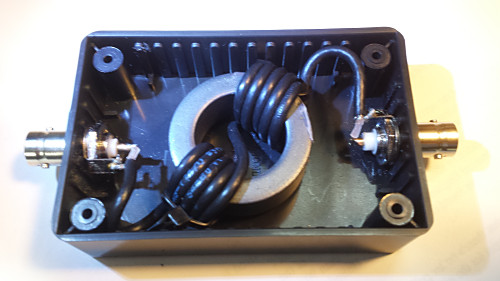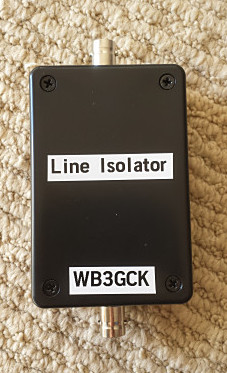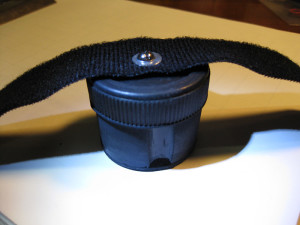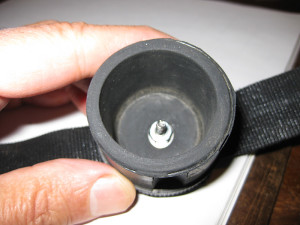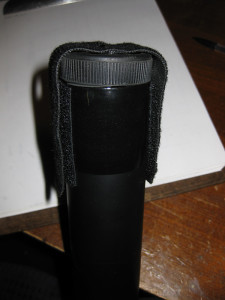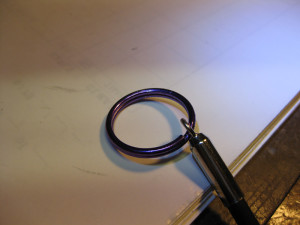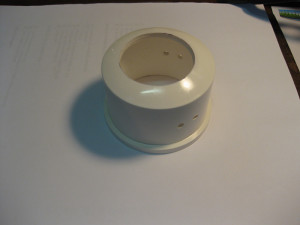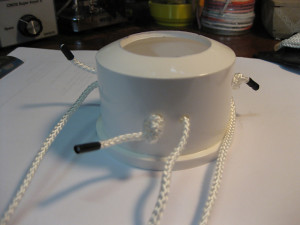[A ham friend of mine recently asked me for the details of how I use my rain gutter and downspout as an antenna. I originally did a write-up on it in 1994. That article found its way into several ham radio publications and newsletters. Most of the original article is still relevant but I have made some changes in the way I feed the “antenna.” So, here’s an updated description of my Downspout Antenna. – WB3GCK]
After years of trying to come up with a good way to get on the HF bands from my little townhouse (without attracting a lot of attention from my neighbors), I started experimenting with using my aluminum rain gutter and downspout for an antenna. The results have been surprisingly good. In fact, it has turned out to be the ultimate low-profile antenna!
The downspout has a vertical run of about 16 feet, connecting the horizontal rain gutter which is about 16 feet long across the front of the house. Including the feed wire into the shack, the total length is in the neighborhood of 42 feet; over a quarter wavelength for 40 meters and almost a half-wave for 30 meters. The house is made of brick, so the entire system is isolated from ground.
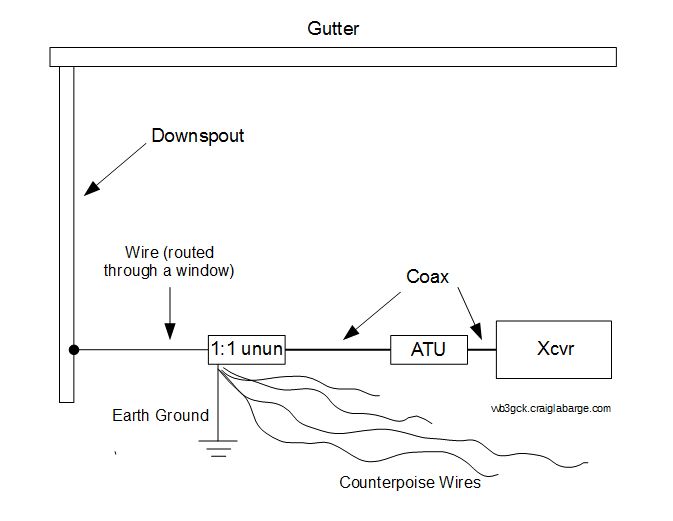
I use my downspout like a random wire antenna, using a commercial autotuner (or internal tuner, in the case of my KX3). I feed the antenna through a homebrew 1:1 unun. I use a short run of coax between the unun and the autotuner on my operating table. A length of #22 stranded hookup wire is used to connect the output of the unun to the downspout outside.
To connect the wire to the downspout, I first sanded the downspout and connected the wire using three sheet metal screws. I used multiple screws to help ensure a low resistance connection. After making the connections to the downspout, I sealed them up using an adhesive/sealant called Goop. Goop is available at most hardware stores.
With the downspout behaving essentially like an end-fed wire, it really helps to work this type of antenna against a good ground. Fortunately, my basement operating position is only a few feet away from where the water supply pipe enters the house. I used a piece of 1/2-inch copper pipe as a ground bus between my operating position and the incoming water pipe. A tinned copper braid strap and a couple of ordinary automotive hose clamps were used to connect the bus to the water pipe. A short braid strap connects the ground stud on the unun to the copper ground bus.
For good measure, I attached counterpoise wires to the ground stud of the unun; one each for 40, 30, 20, and 15 meters. The counterpoise wires are made from garden variety stranded hookup wire cut to a quarter-wavelength. I just run these wires around the shack, hiding them under the rug. Operation on the 80 meter band has been successful using just the ground bus.
How well does it work? During the first few months of operation, I worked 49 states; all with 5 watts or less. I’ve also worked a bunch of DX stations (though I’m more of a casual rag chewer than a DX-chaser). The length of the “antenna” is somewhat short for 80 meters, but performance on that band has been a big surprise. Signal reports on 30 and 40 meters, my primary bands, have been consistently good. In fact, the downspout has been my main antenna at home for more than 20 years.
While this arrangement has served me well, it is not without an issue or two. I find that it helps to clean up and re-do the connections at the downspout periodically. Typically, I do this maintenance every other year or so. Also, I have noticed that my local noise levels on 80 and 40 meters have steadily increased over the years. I attribute this to the proliferation of electronic gadgets both in my house as well as my neighbors’ houses. Those bands are still usable, though.
Some words of caution are in order, however, if you plan to use your rainspout as an antenna:
- Make sure your gutter and downspout are isolated from ground.
- Make sure there is solid electrical continuity between the various sections of your downspout and gutter. Mine are fastened with pop rivets (not the greatest for RF work, but they appear to be doing the job.)
- Watch your power. I wouldn’t recommend running a kilowatt into your rainspout. Ham radio is fun, but not worth burning down your house.
- Make sure people and pets won’t come in contact with the “antenna” while you’re transmitting. This isn’t too much of a problem at QRP power levels, but be careful.
So, if you find your HF antenna options are limited by either space or legal restrictions, take a look at the outside of your house. There just might be a free multi-band antenna hanging out there!
72, Craig WB3GCK

